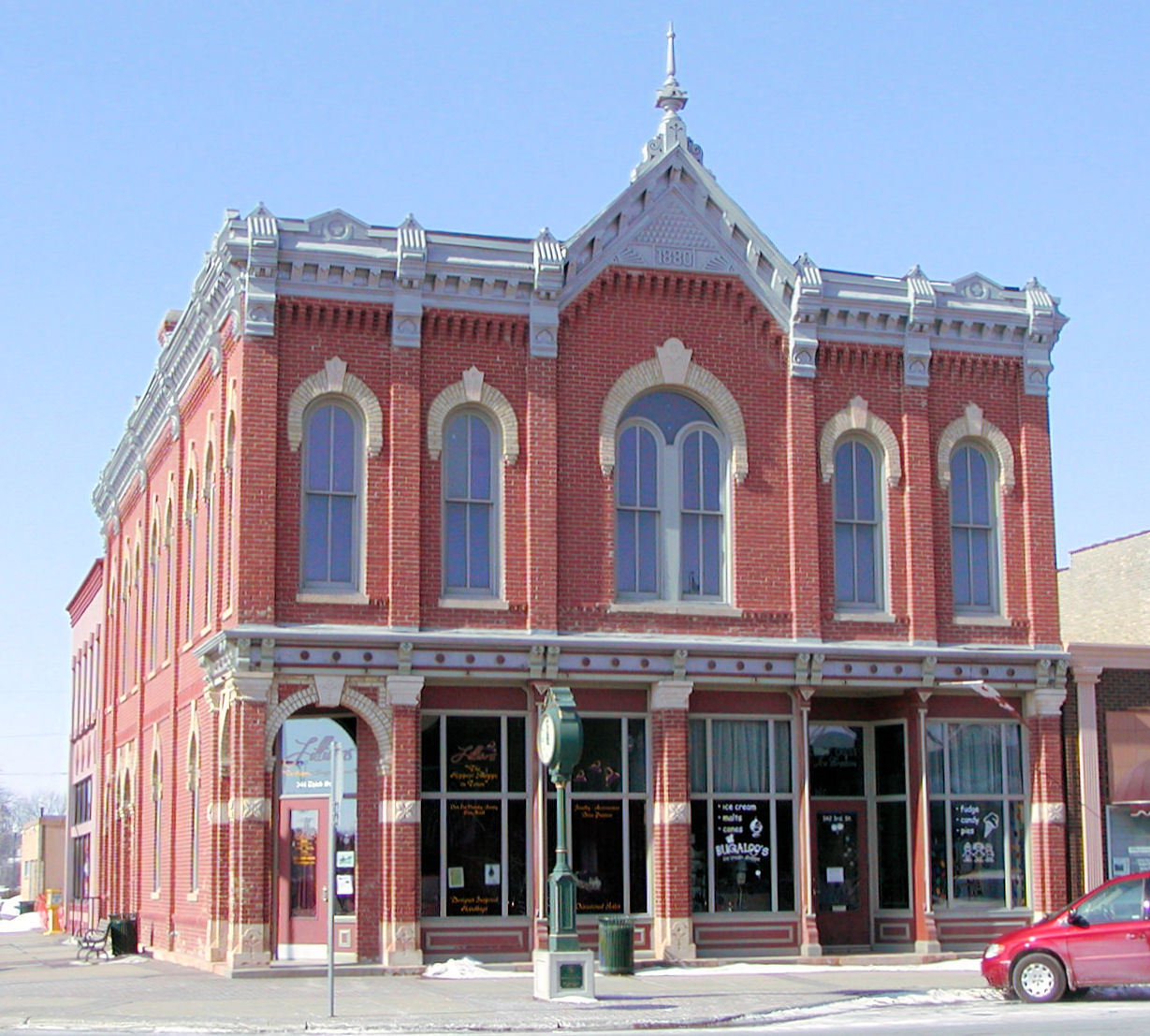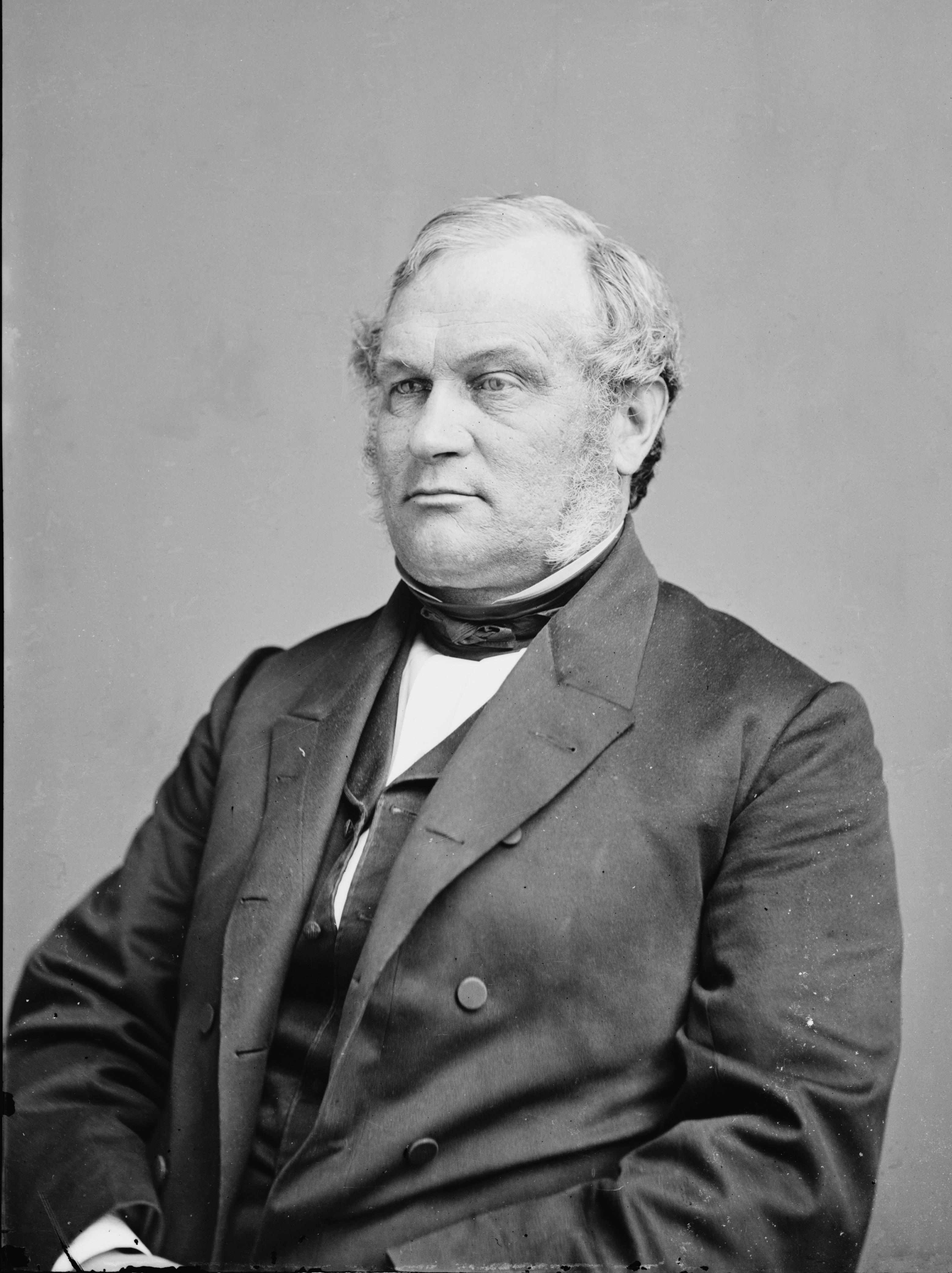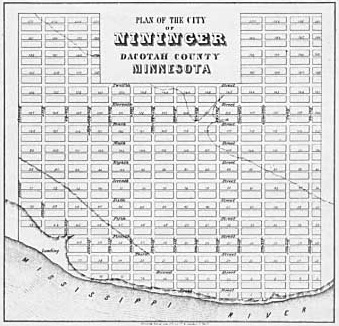|
Dakota County Fair
The Horticulture Building was a building at the Dakota County Fairgrounds in Farmington, Minnesota, United States. It was built in 1918 and demolished in 1988. Dakota County Fair The Dakota County Fair began in 1858 when the Dakota County Agricultural Society was organized. Henry H. Sibley, the first governor of the state of Minnesota, was guest speaker at the first fair which was held in Nininger. The fair moved to Hastings, the county seat, and then to permanent grounds near Farmington in 1918. The Horticulture Building When the permanent fairgrounds were established in 1918, one of the first structures built was the Horticulture Building. The building, designed and built by C. S. Lewis, had a central section flanked by two 40-foot wings. The central section was topped by a wooden octagonal dome which was painted silver. The building was constructed of wood and red clay tiles, and was considered an example of early twentieth-century fairgrounds architecture. In 1980, the Hort ... [...More Info...] [...Related Items...] OR: [Wikipedia] [Google] [Baidu] |
Horticulture Building Gazebo
Horticulture is the branch of agriculture that deals with the art, science, technology, and business of plant cultivation. It includes the cultivation of fruits, vegetables, nuts, seeds, herbs, sprouts, mushrooms, algae, flowers, seaweeds and non-food crops such as grass and ornamental trees and plants. It also includes plant conservation, landscape restoration, landscape and garden design, construction, and maintenance, and arboriculture, ornamental trees and lawns. The study and practice of horticulture have been traced back thousands of years. Horticulture contributed to the transition from nomadic human communities to sedentary, or semi-sedentary, horticultural communities.von Hagen, V.W. (1957) The Ancient Sun Kingdoms Of The Americas. Ohio: The World Publishing Company Horticulture is divided into several categories which focus on the cultivation and processing of different types of plants and food items for specific purposes. In order to conserve the science of horticultur ... [...More Info...] [...Related Items...] OR: [Wikipedia] [Google] [Baidu] |
Farmington, Minnesota
Farmington is a city in Dakota County, Minnesota, United States. The population was 23,632 at the 2020 census. It is a part of the Minneapolis-St. Paul metropolitan area. History Settlers began arriving in Empire Township, in which Farmington grew, in the early 1850s. The village of Dakota City began around the intersection of the Minnesota Central, Hastings, and Dakota railroads, and also the Vermillion River.[ County History ] Dakota County Historical Society The popular city train station in Dakota City was Farmington Station and non-residents began confusing the two names and identifying the town as Farmington. The town's name was then permanently changed from Dakota City to Farmington. The present name was given for the numerous farms near the original town site. Farmington rece ... [...More Info...] [...Related Items...] OR: [Wikipedia] [Google] [Baidu] |
Henry Hastings Sibley
Henry Hastings Sibley (February 20, 1811 – February 18, 1891) was a fur trader with the American Fur Company, the first U.S. Congressional representative for Minnesota Territory, the first governor of the state of Minnesota, and a U.S. military leader in the Dakota War of 1862 and a subsequent expedition into Dakota Territory in 1863. Numerous places are named after him, including Sibley County, Minnesota; Sibley, North Dakota; Sibley, Iowa; Hastings, Minnesota; Sibley Memorial Highway; and Sibley State Park. Early life and education Henry Hastings Sibley was born in Detroit, Michigan Territory. His father, Solomon Sibley (1769–1846), was a native of Sutton, Massachusetts, and a direct descendant of John Sibley, who had immigrated from England to America in 1629. Solomon had moved to Detroit from Marietta, Ohio, in 1798. Solomon Sibley was a prominent politician as well as a respected jurist. He served as the first mayor of Detroit and as a territorial delegate to th ... [...More Info...] [...Related Items...] OR: [Wikipedia] [Google] [Baidu] |
List Of Governors Of Minnesota
The following is a list of governors of the state of Minnesota and Minnesota Territory, United States. The officeholder, who serves as head of government of Minnesota, and is charged with ensuring the faithful execution of the state's laws, is empowered to name state commissioners and department heads and to approve or veto bills passed by the Minnesota Legislature. The governor of Minnesota also serves as commander-in-chief of the Minnesota National Guard. Henry H. Sibley was elected the first governor in a statewide election held on October 13, 1857, and took office following Minnesota's entry into the Union as the 32nd state on May 11, 1858. At the time, the governor and lieutenant governor were elected on separate ballots to terms lasting two years. Prior to 1886, statewide elections were held on odd years. Because of this change (the result of an 1883 state constitutional amendment), Lucius F. Hubbard's second term as governor lasted three years. With the passage of a ... [...More Info...] [...Related Items...] OR: [Wikipedia] [Google] [Baidu] |
Minnesota
Minnesota () is a state in the upper midwestern region of the United States. It is the 12th largest U.S. state in area and the 22nd most populous, with over 5.75 million residents. Minnesota is home to western prairies, now given over to intensive agriculture; deciduous forests in the southeast, now partially cleared, farmed, and settled; and the less populated North Woods, used for mining, forestry, and recreation. Roughly a third of the state is covered in forests, and it is known as the "Land of 10,000 Lakes" for having over 14,000 bodies of fresh water of at least ten acres. More than 60% of Minnesotans live in the Minneapolis–Saint Paul metropolitan area, known as the "Twin Cities", the state's main political, economic, and cultural hub. With a population of about 3.7 million, the Twin Cities is the 16th largest metropolitan area in the U.S. Other minor metropolitan and micropolitan statistical areas in the state include Duluth, Mankato, Moorhead, Rochester, and ... [...More Info...] [...Related Items...] OR: [Wikipedia] [Google] [Baidu] |
Nininger, Minnesota
Nininger is a ghost town in section 18 of Nininger Township in Dakota County, Minnesota, United States. History The city of Nininger was founded and named by John Nininger, brother in-law of territorial and state Governor Alexander Ramsey. Nininger incorporated during the winter of 1857 or 1858. Collections of the Minnesota Historical Society, Volume 17 By Warren Upham Nininger had high hopes for his namesake city to become state capital, and indeed its population did reach nearly 1,000 by the spring of 1858. The city did not flourish, however, and its post office was discontinued in 1889 after 33 years of operation. Today little trace of the original city remains, although two plaques describe < ... [...More Info...] [...Related Items...] OR: [Wikipedia] [Google] [Baidu] |
Hastings, Minnesota
Hastings is a city mostly in Dakota County, Minnesota, of which it is the county seat, with a portion in Washington County, Minnesota. It is near the confluence of the Mississippi River, Mississippi, Vermillion, and St. Croix River (Wisconsin-Minnesota), St. Croix Rivers. Its population was 22,154 at the 2020 United States census, 2020 census. It is named for the first elected governor of Minnesota, Henry Hastings Sibley. The advantages of Hastings's location that led to its original growth are that it is well-drained, provides a good riverboat port, and is close to a hydropower resource at the falls of the Vermillion River (Minnesota), Vermillion River. Other sites closer to the river confluence are either too swampy (Dakota County) or too hilly (Washington County and Pierce County, Wisconsin). U.S. Route 61 in Minnesota, U.S. Highway 61 and Minnesota State Highways Minnesota State Highway 55, 55 and Minnesota State Highway 316, 316 are three of Hastings's main routes. Histor ... [...More Info...] [...Related Items...] OR: [Wikipedia] [Google] [Baidu] |
Wing (building)
A wing is part of a building – or any feature of a building – that is subordinate to the main, central structure.Curl, James Stevens (2006). ''Oxford Dictionary of Architecture and Landscape Architecture'', 2nd ed., OUP, Oxford and New York, p. 853, . The individual wings may directly adjoin the main building or may be built separately and joined to it by a connecting structure such as a colonnade or pergola. New buildings may incorporate wings from the outset or these may be added at a later date as part of an expansion or remodelling. History In Classical and Palladian buildings, the wings are smaller buildings either side of the ''corps de logis'' and joined to it by quadrants or colonnades, partially projecting forward to form a court or ''cour d'honneur''. In medieval and early modern times, kings, princes and nobles upgraded their palaces, stately homes and villas in order to improve their outward appearance. The larger the building complex, the wealthier and more pow ... [...More Info...] [...Related Items...] OR: [Wikipedia] [Google] [Baidu] |
Dome
A dome () is an architectural element similar to the hollow upper half of a sphere. There is significant overlap with the term cupola, which may also refer to a dome or a structure on top of a dome. The precise definition of a dome has been a matter of controversy and there are a wide variety of forms and specialized terms to describe them. A dome can rest directly upon a Rotunda (architecture), rotunda wall, a Tholobate, drum, or a system of squinches or pendentives used to accommodate the transition in shape from a rectangular or square space to the round or polygonal base of the dome. The dome's apex may be closed or may be open in the form of an Oculus (architecture), oculus, which may itself be covered with a roof lantern and cupola. Domes have a long architectural lineage that extends back into prehistory. Domes were built in ancient Mesopotamia, and they have been found in Persian architecture, Persian, Ancient Greek architecture, Hellenistic, Ancient Roman architecture, ... [...More Info...] [...Related Items...] OR: [Wikipedia] [Google] [Baidu] |
National Register Of Historic Places Listings In Dakota County, Minnesota
This is a list of the National Register of Historic Places listings in Dakota County, Minnesota. It is intended to be a complete list of the properties and districts on the National Register of Historic Places in Dakota County, Minnesota, United States. Dakota County is located in the southeastern part of the U.S. state of Minnesota, bounded on the northeast side by the Upper Mississippi River and on the northwest by the Minnesota River. The locations of National Register properties and districts for which the latitude and longitude coordinates are included below, may be seen in an online map. Dakota County's historic sites convey the county's significant historical trends, including the settlement at Mendota, the homes of well-heeled residents of Hastings, the ethnic gathering places in South Saint Paul, and other sites related to life on the prairie, including religion, education, transportation, commerce, and the business of farming. There are 38 properties and districts li ... [...More Info...] [...Related Items...] OR: [Wikipedia] [Google] [Baidu] |
Gazebo
A gazebo is a pavilion structure, sometimes octagonal or turret-shaped, often built in a park, garden or spacious public area. Some are used on occasions as bandstands. Etymology The etymology given by Oxford Dictionaries (website), Oxford Dictionaries is "Mid 18th century: perhaps humorously from gaze, in imitation of Latin future tenses ending in -ebo: compare with lavabo." L. L. Bacon put forward a derivation from ''Casbah of Algiers, Casbah'', a Muslim quarter around the citadel in Algiers.Bacon, Leonard Lee. "Gazebos and Alambras", ''American Notes and Queries'' 8:6 (1970): 87–87 W. Sayers proposed Andalusian Arabic, Hispano-Arabic ''qushaybah'', in a poem by Córdoba, Spain, Cordoban poet Ibn Quzman (d. 1160).William Sayers, ''Eastern prospects: Kiosks, belvederes, gazebos''. Neophilologus 87: 299–305, 200/ref> The word ''gazebo'' appears in a mid-18th century English book by the architects John and William Halfpenny: ''Rural Architecture in the Chinese Taste''. The ... [...More Info...] [...Related Items...] OR: [Wikipedia] [Google] [Baidu] |
Buildings And Structures Demolished In 1988
A building, or edifice, is an enclosed structure with a roof and walls standing more or less permanently in one place, such as a house or factory (although there's also portable buildings). Buildings come in a variety of sizes, shapes, and functions, and have been adapted throughout history for a wide number of factors, from building materials available, to weather conditions, land prices, ground conditions, specific uses, prestige, and aesthetic reasons. To better understand the term ''building'' compare the list of nonbuilding structures. Buildings serve several societal needs – primarily as shelter from weather, security, living space, privacy, to store belongings, and to comfortably live and work. A building as a shelter represents a physical division of the human habitat (a place of comfort and safety) and the ''outside'' (a place that at times may be harsh and harmful). Ever since the first cave paintings, buildings have also become objects or canvasses of much artistic ... [...More Info...] [...Related Items...] OR: [Wikipedia] [Google] [Baidu] |





.jpg)


